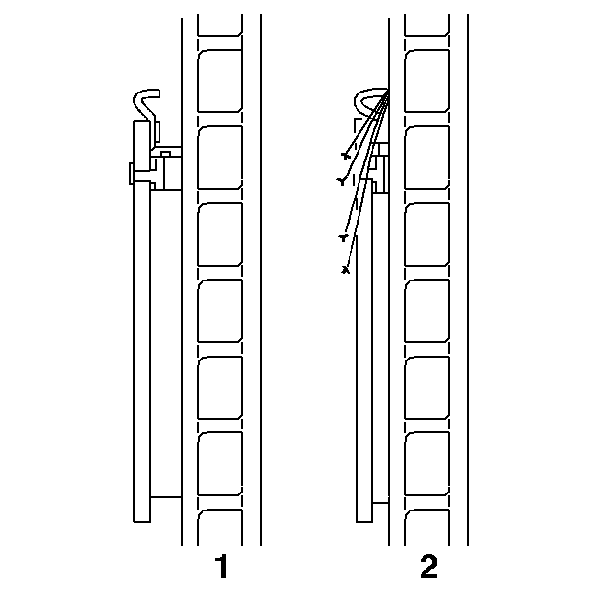| • | Inspect the disc brake pad linings at least twice a year, or whenever
the tire and wheel assemblies are not on the vehicle. |

| • | The disc brake pads have wear indicators. When the pad lining wear reaches
the minimum allowable thickness, the wear indicator contacts the disc brake
rotor (2). The wear indicator will then produce a high-pitched warning
noise during wheel rotation. |
| • | Inspect the thickness of the disc brake pad linings in order to
verify that they have not worn unevenly. The pad lining wear should be
approximately even per axle set. Compare the pad lining thickness to the
following specification: |
Specification
The minimum brake pad lining thickness is 1 mm (0.039 in).
| • | Replace the disc brake pads when the pad lining thickness is less
than the minimum specification. |
| • | Inspect both edges of the pad linings. The highest rate of wear
normally occurs at the trailing edge of the disc brake pads. |
| • | Remove the calipers and inspect the lining surfaces of the inner
and the outer pads in order to verify that they are level. Place the pad lining
surfaces together and measure the gap between the surfaces. If more than
0.13 mm (0.005 in) gap exists midway between the attaching
lugs, replace the disc brake pads. |
| • | Verify that the disc brake pad insulators are in place and not
damaged or excessively corroded. Replace any missing or damaged insulators
in order to preserve proper disc brake performance. |
| • | Replace the disc brake pads if any insulators have de-laminated
from the mounting plates. |
| • | Inspect the disc brake pad lining surfaces for cracks or fractures
which can cause noise or otherwise impair disc brake performance. |

